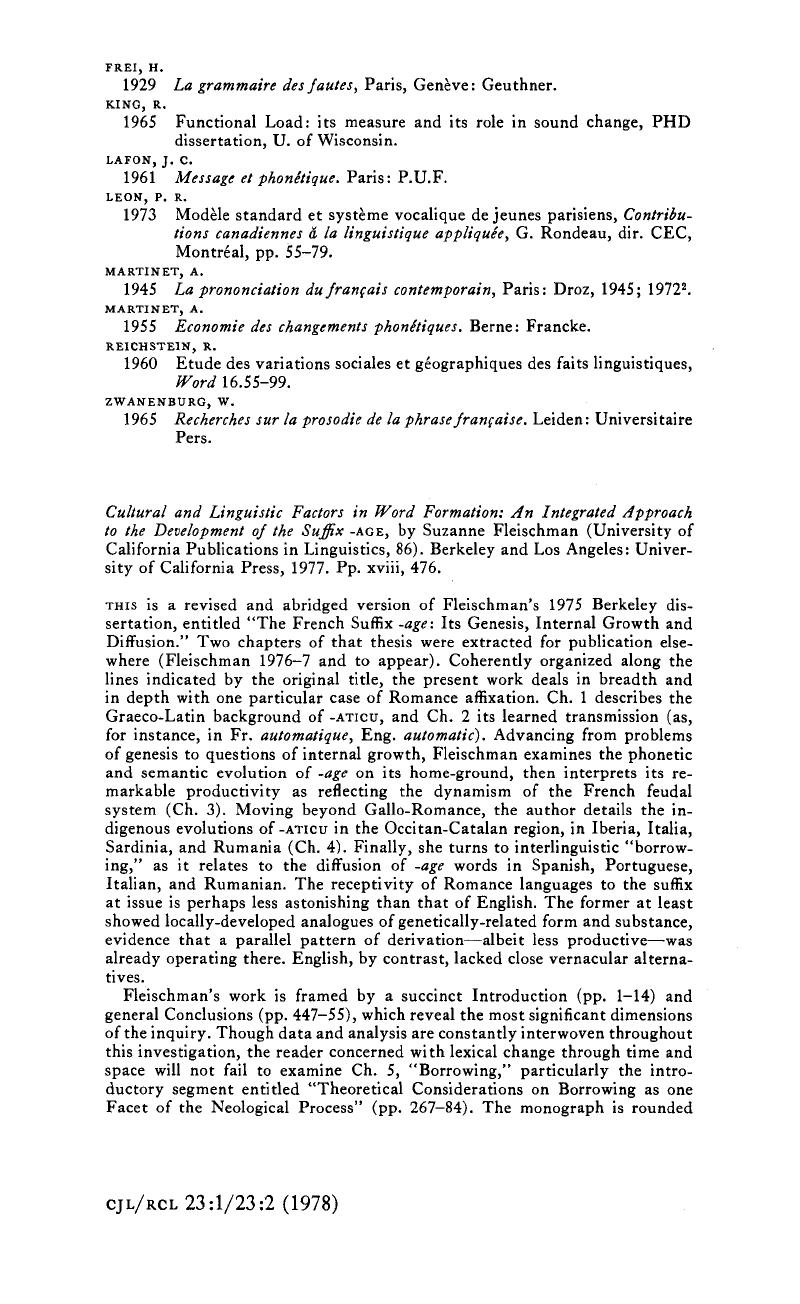No CrossRef data available.
Article contents
Cultural and Linguistic Factors in Word Formation: An Integrated Approach to the Development of the Suffix -AGE, by Suzanne Fleischman (University of California Publications in Linguistics, 86). Berkeley and Los Angeles: University of California Press, 1977. Pp. xviii, 476.
Published online by Cambridge University Press: 27 June 2016
Abstract
An abstract is not available for this content so a preview has been provided. Please use the Get access link above for information on how to access this content.

- Type
- Reviews/Comptes rendus
- Information
- Canadian Journal of Linguistics/Revue canadienne de linguistique , Volume 23 , Issue 1-2 , Spring/Fall 1978 , pp. 144 - 148
- Copyright
- Copyright © Canadian Linguistic Association 1978
References
Fleischman, Suzanne
1976-7 The Suffix -age in Modern French: Language Change Viewed in a Historico-Cultural Perspective. RPh
30.42–58.Google Scholar
Fleischman, Suzanne To appear. Factores operantes en la historia de un sufijo: el caso de -azgo [Miscellany of Studies Dedicated to E. Marcos Llorach by the Facultad de Letras, Universidad de Oviedo].Google Scholar
Hollyman, J. K.
1957
Le Développement du vocabulaire féodal en France pendant le haut moyen âge. Paris et Genève. [Société de Publications romanes et françaises, 58].Google Scholar
Hope, T. E.
1965
The Process of Neologism Reconsidered with Reference to Lexical Borrowing in Romance. TPS
46–84.Google Scholar
Hope, T. E.
1971
Lexical Borrowing in the Romance Languages: A Critical Study of Italianisms in French and of Gallicisms in Italian from 1100 to 1900. New York: University Press.Google Scholar
Malkiel, Yakov
1945
Development of the Latin Suffixes -ANTIA and -ENTIA in the Romance Languages, with Special Regard to Ibero-Romance. Berkeley and Los Angeles: University Press. [University of California Publications in Linguistics, 1:4].Google Scholar
Malkiel, Yakov
1972
The Pan-European Suffix -esco, -esque in Stratigraphic Projection. Papers in Linguistics and Phonetics to the Memory of Pierre Delattre, 357–87. Edited by Valdman, Albert. The Hague: Mouton.Google Scholar
Scoones, S.
1976
Les noms de quelques officiers féodaux: Des origines ă la fin du XIIeme siècle. Paris: Klincksieck. [Bibliothèque française et romane (dir. G. Straka). Série A: Manuels et études linguistiques, 37].Google Scholar


